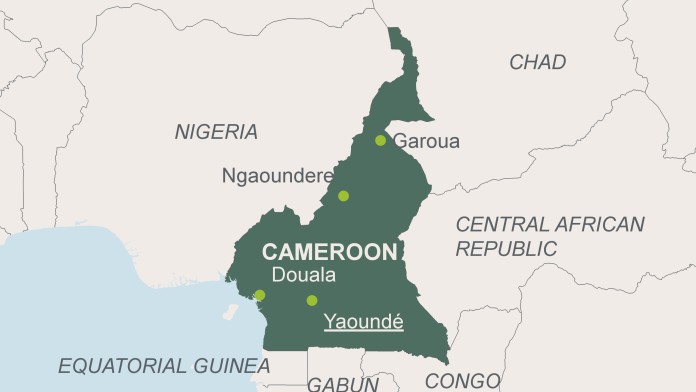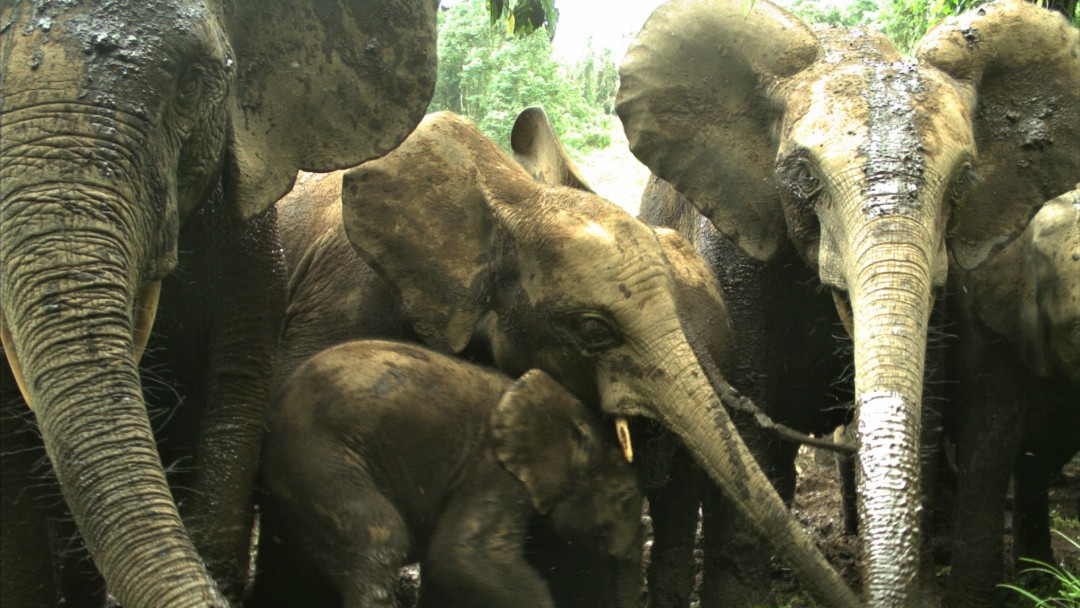Tip: Activate javascript to be able to use all functions of our website

As of: 05/2025
Cameroon is home to an immeasurable wealth: The forests in the southwest of the country are among the most diverse in Africa. Many of the animals and plants living here are endemic. However, this wealth is under threat. Illegal activities such as logging, poaching and over-exploitation of natural resources endanger this unique ecosystem. On behalf of the German Federal Government, KfW is helping Cameroon to manage its conservation areas more effectively and to involve the local population in their preservation. After all, sustainable conservation cannot be achieved without the involvement and support of people in the surrounding villages.
Southwest Cameroon is part of the Gulf of Guinea region and is one of the eight most important biodiversity hotspots in Africa. This area is therefore of great importance not only for Cameroon, but for the world as a whole. The species found here are often endemic, so they are only found in this region. These include many primates such as the Cross River gorilla, the Nigeria-Cameroon chimpanzee subspecies, the drill, the Preuss’s red colobus or the Preuss’s guenon.
However, the valuable ecosystems are subject to a variety of threats: Competing land use interests such as agriculture, mining and agro-industrial projects destroy and fragment the habitat of many species. Previously, people in the region have also lived off illegal logging and poaching.
State funds for the management of protected areas have not been sufficient to effectively counter threats such as poaching and overuse of resources. The local, largely very poor population has not been sufficiently involved and their living conditions were extremely challenging, which led to a rather negative attitude towards nature conservation.

On behalf of the Federal Ministry for Economic Cooperation and Development (BMZ), KfW is working with non-governmental organisations and other partners to support better administration of Cameroon’s conservation areas. An important element here is the involvement of the local population of 171 villages to date, which are also being supported in their socio-economic development.
The people in these villages are involved in protected area management, as defined in jointly signed conservation and development agreements. These include, for example, the control of the boundaries of the protected areas, joint monitoring missions in the parks with the park rangers, wildlife monitoring as well as the maintenance and management of ecotourism facilities. People who have lived from hunting up to now are encouraged to give it up. In return, they receive vocational training, opportunities for livestock farming or beekeeping. Selected young people from the neighbouring areas are supported with scholarships for environmental and forestry studies, and schoolchildren participate in nature conservation education in environmental clubs.
Development measures are also being implemented in the villages, for example to increase agricultural productivity (such as improved cultivation of cocoa and cassava) and to use natural resources more sustainably. Plants and fruit may continue to be collected in certain parts of the protected areas, where the neighbouring villages enjoy exclusive rights of use. Socio-economic infrastructure measures, such as the water supply or the construction of roads to the nearest markets, benefit everyone. The jointly agreed activities are recorded in half-year plans.
The project helps to ensure that existing laws on the protection of natural resources are implemented more effectively. Since residents benefit from the new opportunities, they are strongly committed to the protected areas.
The project now supports the management of a total of four national parks and a wildlife reserve with a total area of almost 350,000 hectares. The facilities in the national parks have also improved: for example, two lodges for eco-tourism have been built in Mount Cameroon National Park, administrative buildings have been constructed for two national parks and various equipment has been procured. The project remains committed to helping resolve land use conflicts around the protected areas. In 2023, the Korup National Park was successfully designated as a UNESCO biosphere reserve. The signing of a transboundary agreement between Cameroon and Nigeria for improved nature conservation was also a major success of the project.
Residents of 71 villages are now committed to preserving the protected areas through conservation and development agreements. Among other things, they have received training on how to draw up business plans; 15 producer groups have organised themselves into cooperatives. More than 13,000 families were able to increase their income through improved agricultural productivity. This also reduces deforestation. The construction and renovation of over 150 kilometres of roads and bridges facilitates the marketing of agricultural products, as markets can now be reached more quickly. A total of 24 water supply projects have been carried out in 40 villages, with three more still under construction.
More than 350,000 seedlings were raised and planted for agroforestry measures on cocoa farms, planting in village forests and on park borders. 580 former hunters are now also participating in the conservation of the protected areas. More than 10,000 traps were removed and around 50 hunting weapons were handed over to the authorities. The former hunters have tapped into alternative sources of income through the project.
The once rather reluctant attitude of the local population towards nature conservation has improved as a result of participation. A new concept for education on conservation has been put into practice with the Integrated Conservation Education Centre (ICEC), which is housed in the botanical gardens of the coastal town of Limbe. It houses a permanent exhibition of six key species of the Southwest Region’s protected areas, as well as offices, a conference centre, an herbarium and study trip accommodation.
The programme thus contributes to the more effective protection of the valuable ecosystems in southwest Cameroon.
The project contributes to the achievement of these following United Nations Sustainable Development Goals:
KfW Group
KfW Development Bank
Governance, Biodiversity, Health West Africa
Share page
To share the content of this page with your network, click on one of the icons below.
Note on data protection: When you share content, your personal data is transferred to the selected network.
Data protection
Alternatively, you can also copy the short link: https://www.kfw-entwicklungsbank.de/s/enzB563A
Copy link Link copied